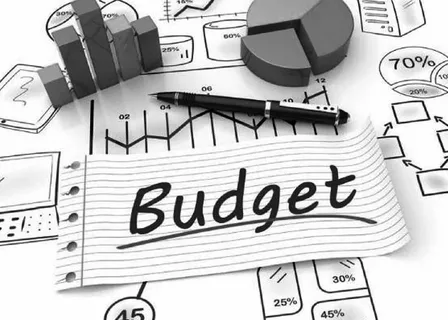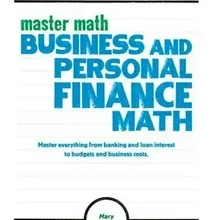In pursuing a financially secure future, budgeting is an essential pillar. Which is why Andor Budget is a good place to start with acing your financial goals.
Many individuals find themselves caught in a web of financial uncertainty due to poor financial planning.
However, a powerful budgeting strategy has been gaining popularity in recent years – the Andor Budget. Andor Budget, its principles, and how you can utilize it to take control of your finances and pave the way to a brighter financial future.
What is Budgeting?
Track your spending habits and make informed decisions about how to allocate your money wisely.
The Andor Budget, also known as the budgeting framework, helps individuals allocate wisely. Coined by financial experts, this budgeting method splits you into three distinct categories: Needs, Wants, and Savings.
Each class is assigned a specific percentage of your income, making it easier to understand, track, and maintain.
The Importance of Budgeting:
Financial Awareness: It enables you to track your income, expenses, and savings, allowing you to make informed decisions about your spending habits.
- Debt Management:
Using a budget, you can find areas where you can reduce your spending, freeing up more funds for debt repayment. It provides a structured approach to managing debt and helps you achieve financial freedom.
- Goal Setting:
A budget helps you set realistic financial goals. Whether saving for a down payment on a house, planning for retirement, or going on a dream vacation, budgeting allows you to allocate funds toward achieving these goals.
- Emergency Preparedness:
By budgeting and setting aside a portion of your income for emergencies, you can have peace of mind knowing you are financially prepared for unforeseen circumstances.
Introducing Andor Budgeting:
Andor is a comprehensive budgeting system that simplifies managing your finances. You are designed to help you create and stick to your Budget effectively.
a) Expense Tracking:
Andor allows you to track your expenses effortlessly. You can spot areas where you could be overspending and make the required corrections by classifying your spending.
b) Goal Visualization:
With Andor, you can set financial goals and visualize your progress toward achieving them. This feature provides motivation and helps you stay on track with your budgeting journey.
c) Automated Savings:
Andor offers automated savings features that allow you to set aside a certain percentage of your income for savings.
d) Real-Time Insights:
The Andor budgeting system provides real-time insights into your financial health. You can view detailed reports and analyses of your income, expenses, and savings, enabling you to make informed decisions about your financial future.
Breaking Down the Andor Budget
- Needs (50% of income): The first category covers essential expenses for maintaining your daily life. Expenses, including rent or a mortgage, utilities, groceries, transportation expenses, insurance fees, and minimum debt payments, are included in this category. These expenses are non-negotiable and should be at most 50% of your total income.
- Wants (30% of revenue): The second category encompasses discretionary spending – those expenses that enhance your lifestyle but aren’t crucial for survival. This includes dining out, entertainment, travel, shopping for non-essential items, and hobbies. Flexibility and enjoyment while promoting financial responsibility.
- Savings (20% of income): The third category is reserved for securing your financial future. This portion of your income should be directed towards savings, investments, retirement funds, emergency funds, and debt repayment beyond the minimum. Building a healthy savings cushion is crucial for unexpected situations and long-term financial growth.
Tips for Implementing the Andor Budget
Track Your Spending:
Track your expenses for a month to identify patterns and allocate funds accurately.
Be Realistic:
Set achievable budgeting goals that align with your lifestyle and financial aspirations.
Automate Savings:
Consider automating your savings and investments to ensure that the 20% portion of your income is consistently set aside.
Reevaluate Regularly:
Life circumstances change, so review your Budget periodically and adjust as needed.
Assessing your Current Financial Situation
Start by collecting all your financial obligations and help identify areas where you can make adjustments.
Next, calculate your total monthly income. This includes not only your regular salary but also any additional sources of income, such as freelance work or rental property. Subtract your fixed expenses, such as rent or mortgage payments, utilities, and loan payments.
After understanding your income and fixed expenses, track your variable costs for at least a month. This includes groceries, transportation, entertainment, and discretionary spending. You are making sure to categorize them accurately—spending and allocating funds toward your financial goals.
Setting Financial Goals: Andor Budget
Once you have assessed your current financial situation, it’s time to set meaningful and realistic financial goals. Medium-term goals involve saving for a down payment on a house or starting a business. Long-term goals include retirement planning or funding your children’s education.
Creating a Budget Template
Now that you clearly understand your current financial situation and goals, it’s time to create a budget template. A budget template acts as a framework for your income, expenses, and savings plans. It helps you allocate funds to different categories and ensures that you are living within your means.
To create a budget template:
- Start by listing your sources of income. This includes your regular salary and any additional income from side hustles or investments.
- List your fixed outcome, such as rent or mortgage payments, utilities, and loan payments.
- Subtract your fixed expenses from your income to determine how much disposable income you have left each month.
Next, allocate funds towards different expense categories such as groceries, transportation, entertainment, and savings. Be realistic and consider your financial goals when determining how much to give to each class. It’s essential to balance enjoying your money now and saving for the future.
Identifying and Tracking Income and Expenses
One of the critical components of creating an adequate budget is identifying and tracking your income and expenses. This involves categorizing your expenses accurately and keeping a record of your spending.
Start by grouping your expenses into different categories, such as housing, transportation, food, entertainment, and savings, and updating it regularly.
Tracking your income is equally essential. Make sure to record all sources of income accurately and update your budget template accordingly. This will give you a clear picture of spending and saving habits.
Prioritizing and Allocating Funds
Once you have identified your income and expenses, it’s time to prioritize and allocate funds toward different categories. Start by focusing on your fixed expenses, such as rent or mortgage payments, utilities, and loan payments. These are typically non-negotiable and should be paid first.
Next, allocate funds towards your paying off debt or investing for retirement. Set aside a specific amount of money each month towards these goals, making them a priority in your Budget.
After allocating funds towards fixed expenses and financial goals:
- Determine how much you can give towards variable costs such as groceries, transportation, and entertainment.
- Be mindful of your spending and make conscious choices about allocating your money.
- Look for areas where you can cut back and save money without sacrificing your quality of life.
Reducing Expenses and Saving Money
Reducing expenses is crucial to creating an adequate budget and saving money.
Start by reviewing your variable expenses and identifying areas where you can make adjustments. Look for subscriptions or memberships that you no longer use and cancel them. Or cable package. Meal planning and shopping for sales.
Additionally, evaluate your fixed expenses and see if there are any opportunities to save. Can you refinance your mortgage to get a lower interest rate? Can you negotiate a lower insurance premium?
These minor adjustments can add up over time and help you save more money.
Reviewing and Adjusting your Budget
Having a budget is not a one-time task; it requires regular review and adjustment. Life circumstances change, and so do our financial goals and priorities.
Set aside time each month to review your expenses and income—areas where you exceeded your Budget or fell short.
If you consistently overspend in a particular category, consider increasing the budgeted amount or finding ways to reduce expenses in other areas. If you consistently underspend, consider reallocating those funds towards your financial goals or saving for future payments.
Tools and Resources for Budgeting
Several tools and resources are available to help you create and manage your Budget effectively. Budgeting apps like Mint, Personal Capital, and YNAB (You Need a Budget) offer features such as expense tracking, goal setting, and budgeting templates. Track your expenses in real-time.
Suppose you prefer a more traditional approach; use a template. This allows for more customization and flexibility but requires manual input and tracking.
Additionally, numerous books and online resources provide in-depth information and guidance on budgeting. Some popular titles include. These resources offer practical tips and strategies for creating and sticking to a budget.
How to stay Motivated and Stick to your Andor Budget
Firstly, remind yourself of your financial goals and why you created a budget in the first place. Visualize the future you desire and the freedom that financial independence will bring.
Secondly, celebrate small wins along the way. Achieving financial goals takes time, and it’s essential to acknowledge and celebrate your progress. Whether it’s paying off a credit card or reaching a savings milestone, take the time to reward yourself for your hard work and discipline.
Lastly, find an accountability partner or join a community of like-minded individuals on a budgeting journey. It can provide support and motivation when you need it most.
Achieving Financial Freedom through Budgeting: Andor Budget
By creating a well-planned budget and sticking to it, you can take control of your money and pave the way toward a brighter financial future.
Financial freedom means having the ability to live life on your terms without being burdened by financial stress. And the freedom to pursue your passions and dreams.
By setting realistic goals, tracking your expenses, and Remember, it’s not about depriving yourself of what you enjoy; it’s about making intentional decisions that align with your goals and values. Andor’s Budget is reasonable.
Conclusion
The Andor Budget is a powerful tool that allocates your income to the three categories of Needs, Wants, and Savings; you create a roadmap for financial success and stability.
Remember that budgeting is a journey, and the key to success lies in discipline, flexibility, and consistent effort.
With the Andor Budget, you can master your finances, embrace a debt-free lifestyle, and pave the way to a brighter financial future.
Next Article:






